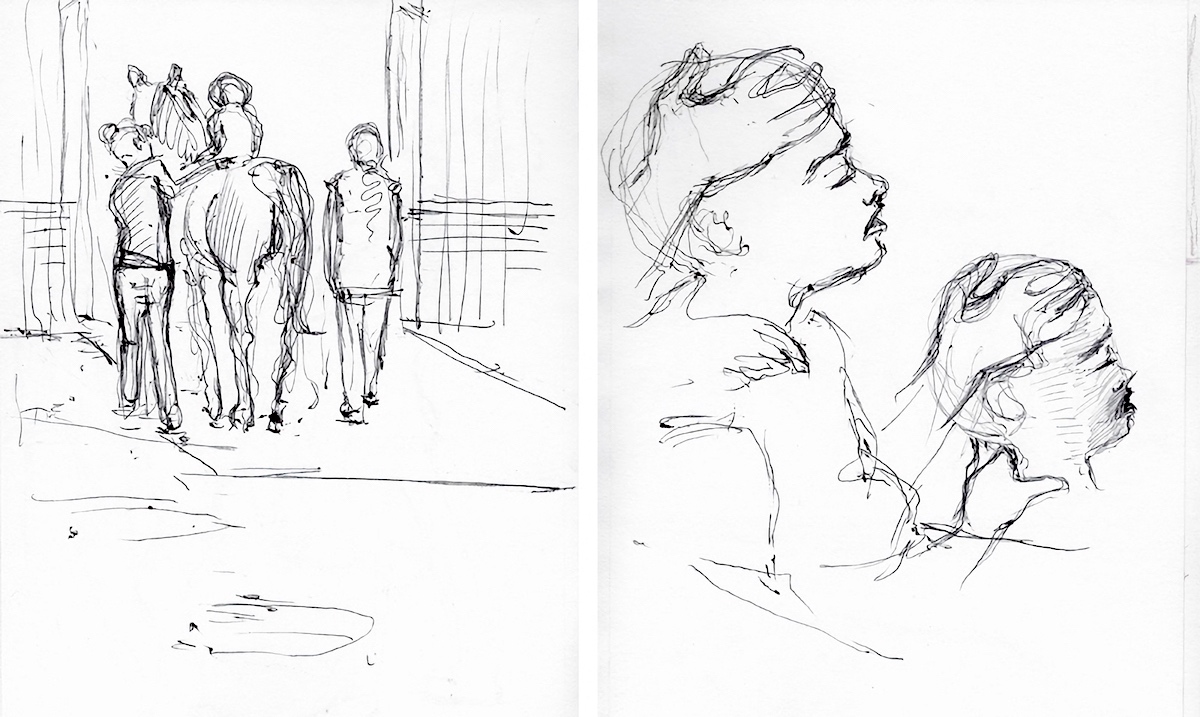Student Blog
What are OS/OT?

Spring Semester Shenanigans ⟩
April 26, 2019, by Jessica P.
Getting Involved School/Life Balance What are OS/OT?
Happy last day of classes Trojans! It’s hard to believe that today was already my last day of classes in the Master’s program here at USC. Every semester always seems to fly by but this semester especially has gone by so fast I’m not sure where the time has gone.
Fall semester may get a lot of hype because of football season but I’m a big fan of spring semester also. The past few months have been packed with all different events from traveling internationally for my externship to attending my first AOTA national conference. Here is a sneak peek into what I’ve been up to the past few weeks.
AOTA Conference
In April I was able to attend my first AOTA conference and visit New Orleans for the first time. It was a jam-packed few days attending different workshops and speaker sessions. In between sessions, my friends and I explored New Orleans and of course tried beignets!
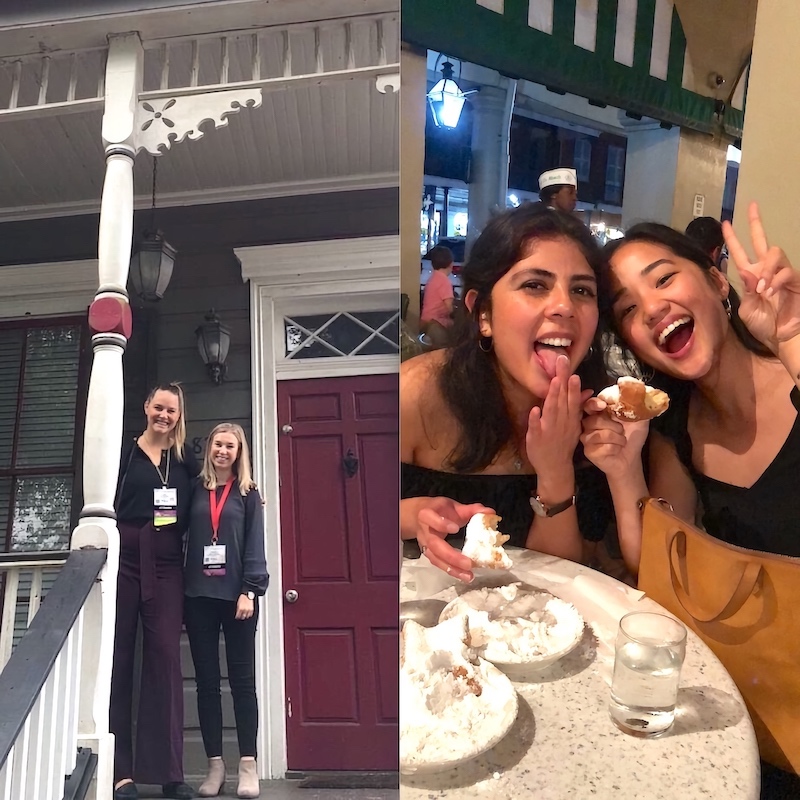
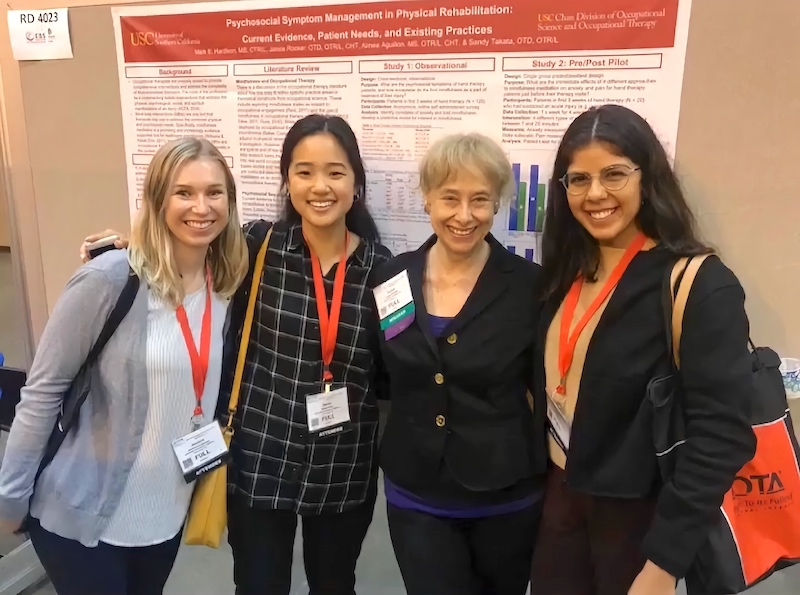
At AOTA, I really saw the power of the Trojan Family. From hearing one of my former clinical instructors and USC alumni, Laura Ferrari, speak on her work in forensic mental health to exploring posters, like the one above by Dr. Janice Rocker.
LA Times Festival of Books
This year I had the opportunity to help plan the OT booth at the LA Times Festival of Books Health Pavilion. The Festival of Books is such a fun event to spread OT to the greater Los Angeles community and celebrate OT month! We had stations for stress management, weight management, research recruitment, and sensory integration play.
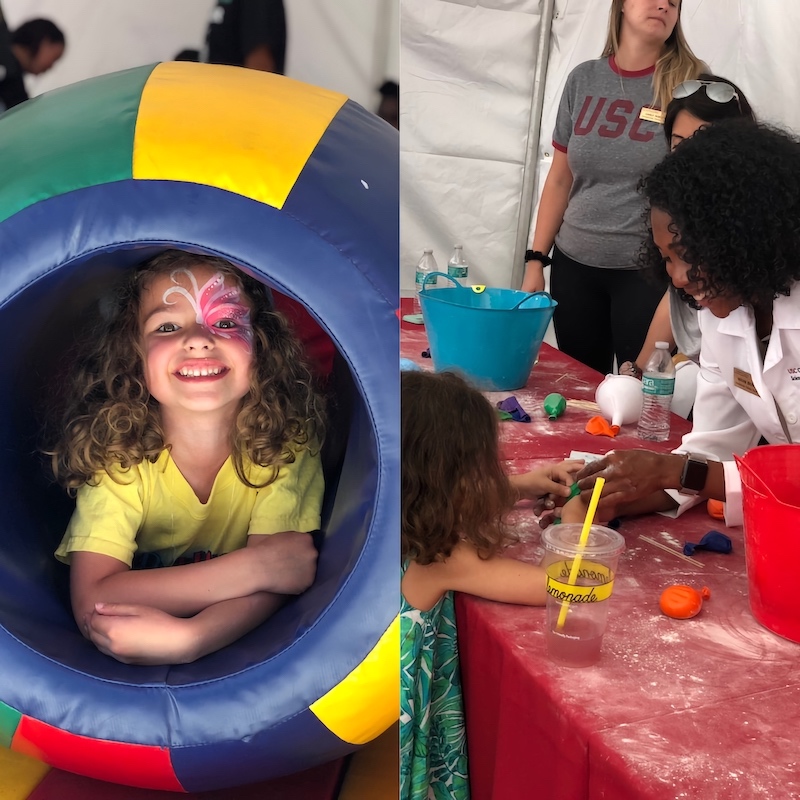
Tours
The past few weeks have been busy with tours! We’ve had visitors from all over, including freshman from a local high school who are interested in pursuing occupational therapy.
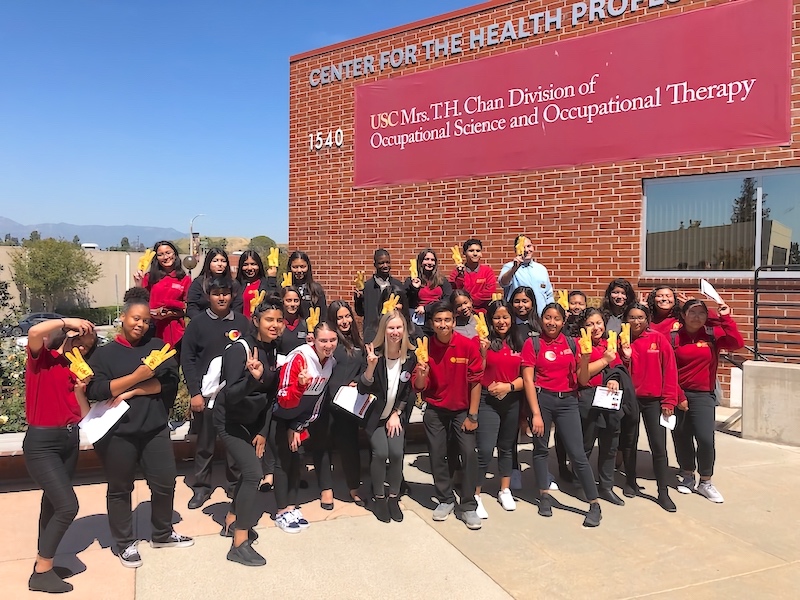
Students from USC Hybrid High visiting the Chan Division
Desert X
While things can get busy in the spring, I always try to make time for occupations outside of school that are meaningful to me. One of my favorite things to do is to explore various art museums so this year my friend and I spent a weekend in Palm Springs. We drove around the various Desert X art installations and ate tons of delicious food!

I hope you all had an amazing semester, I know I did! Good luck on finals and don’t forget to take time for self-care and engaging in your favorite occupations!
⋯
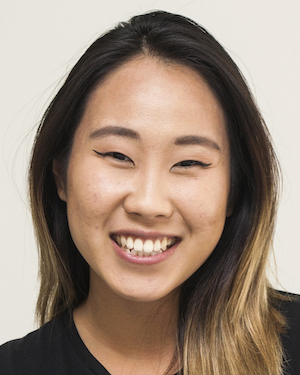
Presenting My First Poster at AOTA ⟩
April 22, 2019, by Joyce
Getting Involved What are OS/OT?
If you had asked me last year, I would have told you that presenting at AOTA was definitely not in my future plans. But here I was with my partner, Tabitha Lin, presenting on the role of occupational therapy in the student run clinic! & what a FUN experience this was!!
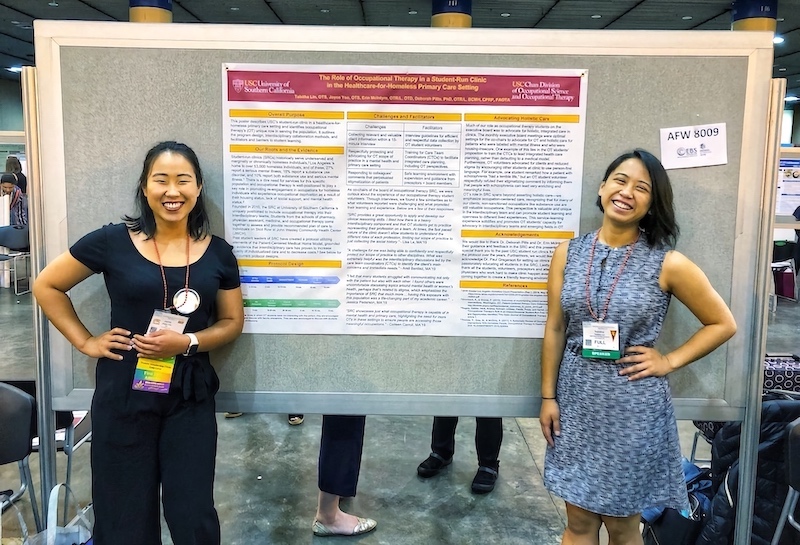
Tabitha and I with our poster presentation
During the poster session, Tabitha and I were standing by our poster and engaging in conversations with attendees who were passing. It was interesting to see both students and program directors come up to us. We encountered directors who were trying to set up a similar student run clinic in their occupational therapy program and asked us questions about our model. I had so much fun discussing my experiences as a co-chair exec for SRC as well as the experiences our student volunteers had.

Ambassador Serena and I after setting up the USC Booth!
In addition, this was my first AOTA conference and my first time being in New Orleans, LA! Conference is definitely a hustling busy time with so many moving parts. In addition to the poster presentation, as a student ambassador, I also worked the USC booth during the expo hours. I enjoyed this part of conference as I was able to interact with alumni and perspective students who were thinking about pursuing their PhD or Doctorate at SC. I also got to explore other booths including Nike, Zappos, and Microsoft to explore their adaptive shoes, clothing, and gaming equipment.
NOLA was extremely fun with its culture in food and drinks. I think I consumed way too many oysters during my time there. My friends and I got drinks after conference sessions and explored the city together!
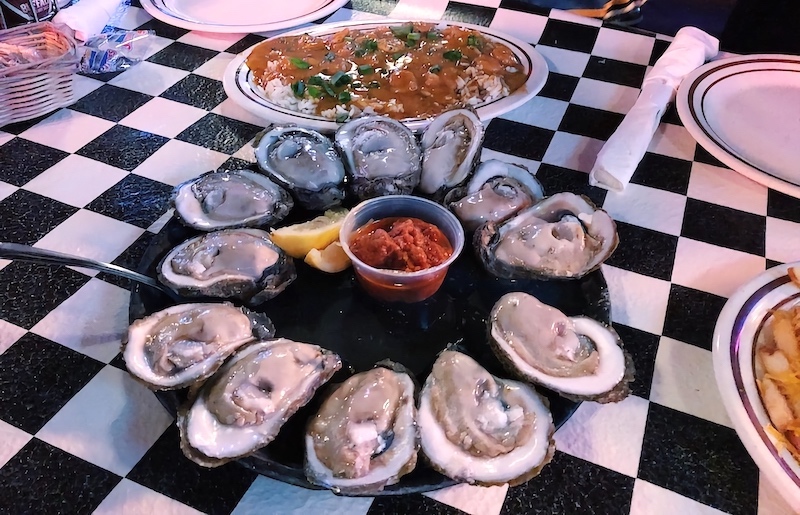
Fresh Oysters!!
I think going to a national conference such as AOTA as a student is such a unique experience and I highly encourage all students to go! As a student, there is no pressure to go to all sessions (to accrue continuing education) but to truly explore different parts/practice areas and enjoy conference for what it is! It’s also a great networking opportunity, I found myself talking with occupational therapists from New York who were looking to hire, so opportunities all around!
⋯
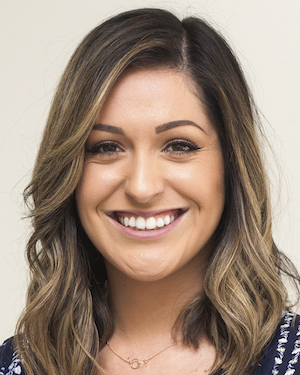
Inspiring High School Students to Become Future OTs ⟩
April 17, 2019, by Melissa
Diversity First-Gen Getting Involved What are OS/OT?
One of my goals as an Ambassador has been to increase awareness about occupational therapy. In order to do so, we decided to reach out to high school students, as I often hear that people would have pursued OT a lot sooner if they had known it was an option. I’ve been lucky enough to present to a couple of high schools now, and the experiences have been both rewarding and challenging. When presenting to high school students, we really have to adapt the way that we approach them. We often present to pre-health clubs or OT-specific clubs as part of our job, therefore we go into our presentation with the understanding that these students already have an interest in OT or in a healthcare profession. Oftentimes, the students have already been thinking about graduate school and pursuing higher education, therefore we know we can tailor our presentation in a specific way. High school students, on the other hand, come from a variety of backgrounds, have different plans and aspirations, and varying interests. They are more difficult to engage, and may or may not be voluntarily attending our presentations. Before my first presentation to one of the high schools, I kept thinking to myself, “How am I going to engage them?! How am I going to give them all of this important information without putting them to sleep?!”
In an attempt to get some guidance, I approached one of my professors who had also given a talk to a group of high school students recently, and she gave me some great tips. The one that stuck out to me the most was her tip on making it RELEVANT to the students, which made total sense. I have since tried to find ways to make my presentation relatable, such as giving the students some information about my own journey, my experiences as an athlete (as there are often many athletes that attend these presentations), and what it has meant to me to be a first-generation graduate student using my bilingual skills in Los Angeles. I also like to take different types of adaptive equipment and sensory toys to show them how they are used, and why they are relevant in our profession. This gives them some interactive opportunities where they get a glimpse into what we do as well as an opportunity to ask questions. Lastly, I always like to take GIVEAWAYS. Nothing gets a group of high school students more excited than some free stuff they get to take home, and I think it’s a nice token to remind them of our presentation.
Fortunately, the students I have presented to thus far have been courteous and kind, albeit shy in the beginning. They seem receptive to the information we have to offer, and I have even gotten emails from students that are now interested in pursuing careers in OT! I’m so grateful I have had the opportunity to spread the word about our amazing profession and our wonderful program here at USC, and I look forward to the short time I have left in this position to continue doing so! If you ever have questions about recruitment or anything else in general, feel free to reach out!
Fight on!

Presentation at Leuzinger High School
⋯

Spring 2019 ⟩
April 3, 2019, by Evan
What are OS/OT?
It’s unbelievable that my leadership capstone class, which meets every Monday at 1pm, represents the last opportunity my entire MA-II class will have to be together in one room. It seems like only yesterday that we were all meeting each other for the first time! These two years have just flown by. To be honest, at the time I entered grad school I was feeling very nervous about my choice to come back to school and pursue a second career. Now I feel so good about that decision, and grateful that the experience has surpassed my expectations. Simply put, I’ve met some of the best people I’ve ever known here in the USC Chan Division. I have learned so very much. Not only do I feel ready and competent to move on to an OTD residency at Children’s Hospital Los Angeles, but the base of knowledge and experience I have gained through this curriculum will serve me as a person, father, and husband for the rest of my life. Thanks sincerely to my student colleagues and every professor and staff member that has made this journey special for us. It’s an amazing gift to be in a position where you genuinely feel you can help people.
And to those of you who were wondering if it is really possible to have kids in Grad School, I’m happy to report that my second child was born in December! She is my soulmate. Sure, these last few months have been busy. It’s taken a lot of hard work and determination to get everything on the list done each day. But with the sincere support of this department, which really means the world to me, I’ve been able to stay on course.
So all of you who might be wondering if a return to grad school might just be too much, I’m here to tell you it’s possible! Keep the faith, work hard, and good things will happen. I believe this with all my heart.
⋯

Reflections From My Residency: Using the human animal bond therapeutically ⟩
April 2, 2019, by Antonietta
What are OS/OT?
As I discussed in the previous blog, humans’ perception of our emotional bond with animals started being examined and debated in the mid 1700s. But when did we start to use this bond therapeutically? The earliest report is at the York Retreat, an asylum for the mentally ill, in England 1792 where the inhabitants cared for rabbits and chickens (Netting, Wilson, & New, 1987). This therapeutic strategy took quite a bit longer to make its way to the United States, but starting in the 1940s at Pawling Air Force Convalescent Hospital, veterans were encouraged to work with farm animals as part of their recovery. By the 1970s dogs became a common tool in therapeutic settings: 48% of institutes incorporated them in some way per an American Humane Education Society report. Animals are now well-established as therapeutic partners, used by many disciplines and in variety of ways. But why? History has moved on from so many other treatments of the past. Plunge baths from the 1700s aren’t used anymore and lobotomies — which were very popular in the 1950s — are considered repugnant and deemed unethical. But animal assisted therapy has gotten stronger, more common, and better supported by research. What makes it so effective? Is it the emotional bond between human and animal?
Curious about this therapeutic bond and interested in the power of images to shed light on relationships, my father Carmine, organized a field study at The Children’s Ranch. He came every Friday afternoon for a semester to observe the sessions and sketch what he was seeing. He wanted to know if he could capture the mystery of this therapeutic bond in a visual form: painting.

Carmine and Storm
For me as a therapist, it was an interesting experience to have this observer participating in our sessions, but I was curious what it was like for him. Since he’s my dad it was easy to get an interview!
How did you decide how much time you would spend at The Ranch?
“That decision depended on a specific rule I set for myself: my documentation would not employ any cameras; all my observations would be drawn by hand. Using a camera would have sped up the work, but it also would have had a few undesirable side effects.
- Cameras reduce the actual amount of time you need to spend on the ground and therefore can lead to a false illusion of understanding the authentic experience.
- Cameras automatically create a default composition which is hard to modify. In the process, they can eliminate key parts of an experience.
- Cameras make people pose! That was something I wanted to avoid. To see genuine moments, I needed to be integrated as part of the team so that everyone was relaxed and acting naturally.
I needed to spend time on the ground to gather visual data, build relationships slowly, accrue insight, and become a participant. It took about 4 months of consistent visits to get to that point, but I didn’t know that in advance”
What were some of the challenges you encountered?
“One challenge was developing a sketch kit that was completely mobile. Since sessions at the Ranch move around a lot, I needed to be agile and flexible. In a way, I was a member of the team and didn’t want anything to be slowing me down while we transitioned from the chicken coop to the barn. So, every piece of equipment had to be portable and always ready-to-go.
A second challenge was that children are curious, and my tools often piqued their interest. The kids wanted to play with them and once they saw some of the sketches, there was a risk they would be distracted from the work they were doing with the therapist. I had to find the line between engaging them and building our relationship, and redirecting them back to the focus of their time at the Ranch, which was the caring for the animals.
However, the fact that the kids were conscious of being drawn was significant in another way. I’m interested in how these sketches, and eventually the finished oil paintings, might serve as a mechanism for self-reflection for the children. I believe that how we picture ourselves is a big part of our identity formation. When the paintings are exhibited at my studio later this year and everyone is invited to the opening, I am curious how the children and their families will respond to visualizations of themselves participating in really unique and meaningful experiences.”
Talk about your trip to visit me at Skyline Therapy Services in Albuquerque.
“You and I had talked a lot about the differences between Animal Assisted Therapy and Hippotherapy, but it wasn’t until I got to see both that I really understood. Your work at the Ranch grows out of a relationship you foster between the children and the animals. The activities are structured around caring for the animals’ needs and understanding their well-being, as a way for the child to develop their own sense of self, autonomy, and identity as well as any other goals you are working on. From a visual point of view, that kind of relationship is subtle and elusive.
At Skyline, where Hippotherapy is the main treatment tool, it is not about the emotional bond, but the relationship between bodies. For an artist, that kind of spatial relationship is more visible and more direct; you you don’t need to visualize a mood, or a state of mind. With Hippotherapy, it much more physically evident how the therapists are helping and how the child’s body changes before and after their session.”
Now that you have finished your field work and are starting on the oil paintings, do you think you have achieved your goal of visualizing the bond?
“After I finished amassing the sketches my next big challenge was to create compositions for the paintings. These were based not just on the drawings, but also my memory and a kind of intuition that had been created by everything I had seen. The compositions were also determined by basic pictorial conventions and requirements. I know that amounts to a lot of variables. My concern as an artist is that what results might be an interesting picture, but not real documentation. I guess the critical test will be when the kids, therapists, and families see and judge for themselves.”
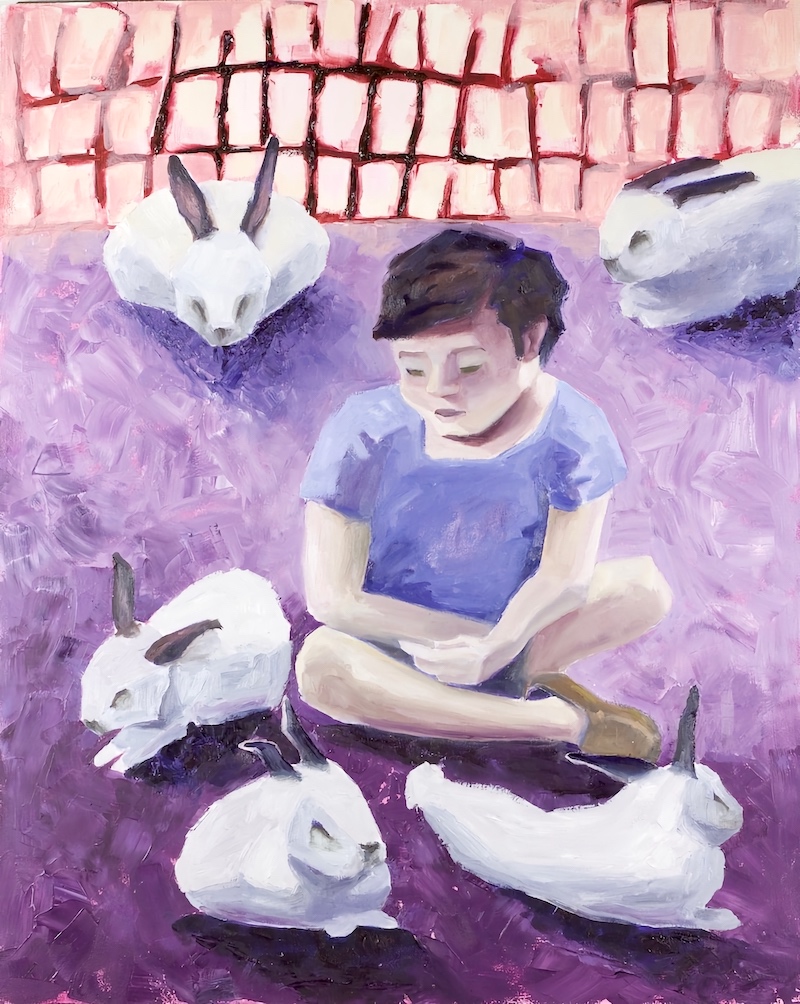
Child with rabbits
When I look at the paintings, I see what looks like my treatment sessions but also feel what it is like the be at the Ranch. It is amazing to see a visual image of that sense of calm when a child with ADHD sits quietly with the rabbits, because that is what makes them feel happy and “green.” It is incredible to see in a permanent form, the fleeting connection between a child and horse that is so strong it can get a kid out of her home despite immense rigidity. I was happy to have an extra member of our team when my dad was visiting the Ranch and I’m very excited to see what my students think of these pictures.
Netting, F. E., Wilson, C. C., & New, J. C. (1987). The human-animal bond: Implications for practice. Social Work, 32(1), 60–64. https://doi.org/10.1093/sw/32.1.60
⋯








